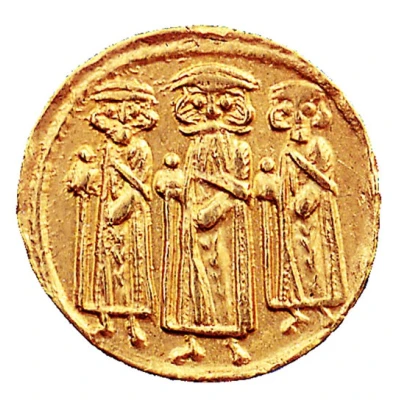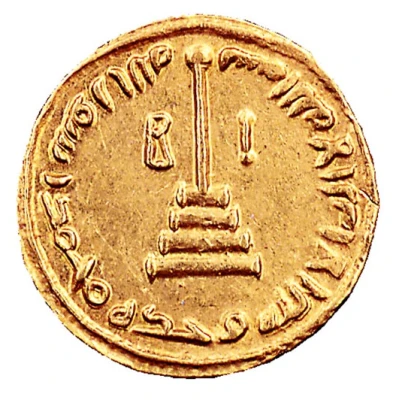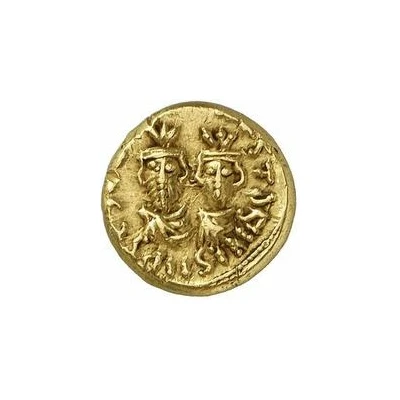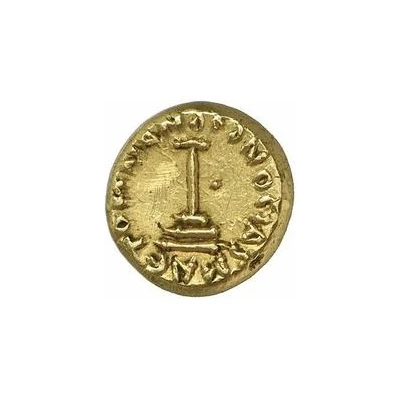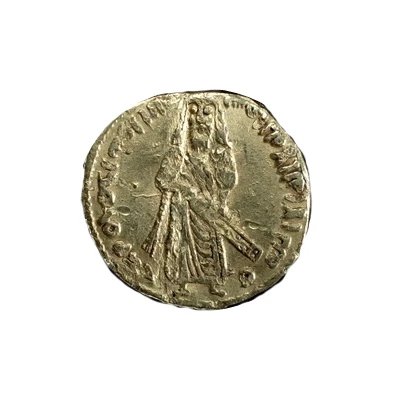
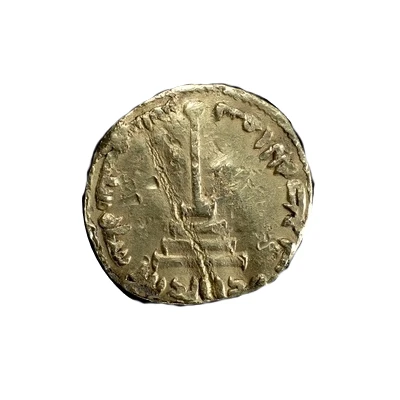

© A. H. Baldwin & Sons Ltd
Solidus / Dinar - Abd al-Malik - standing caliph type Arab-Byzantine ND
| Gold (.916) | 4.3 g | 19 mm |
| Issuer | Umayyad Caliphate |
|---|---|
| Type | Standard circulation coin |
| Years | 694-741 |
| Value | 1 Dinar |
| Currency | Solidus (661-750) |
| Composition | Gold (.916) |
| Weight | 4.3 g |
| Diameter | 19 mm |
| Shape | Round (irregular) |
| Technique | Hammered |
| Demonetized | Yes |
| Updated | 2024-10-05 |
| Numista | N#70964 |
|---|---|
| Rarity index | 97% |
Reverse
Image of a Byzantine cross on steps. The Arabic legend around it contains the date, AH 76. The inscriptions are in a style of angular script sometimes known as Kufic, typical of this period.
Comment
Up to the late seventh century, coins in the western region of the Islamic world copied and adapted the coins of the Byzantines whom they conquered. The 'Standing Caliph' image was used both on gold and copper coins. It reflects a stage in the evolution of early Islamic coinage, with the 'arabization' of the earlier Byzantine coins.Historical detail: Abd al-Malik was responsible for the construction of the two principal monuments of the early Islamic period, the Done of the Rock in Jerusalem, and the Umayyad mosque in Damascus.
Interesting fact
One interesting fact about this coin is that it features a unique blend of Arab and Byzantine influences in its design, reflecting the cultural exchange and fusion that occurred during the Umayyad Caliphate. The coin's obverse side features an image of the standing caliph, Abd al-Malik, dressed in Byzantine-style robes and holding a scepter, while the reverse side features an Arabic inscription in a distinctive cursive script. This blending of styles and influences is a hallmark of the Arab-Byzantine coinage of this period and adds to the coin's historical and cultural significance.
